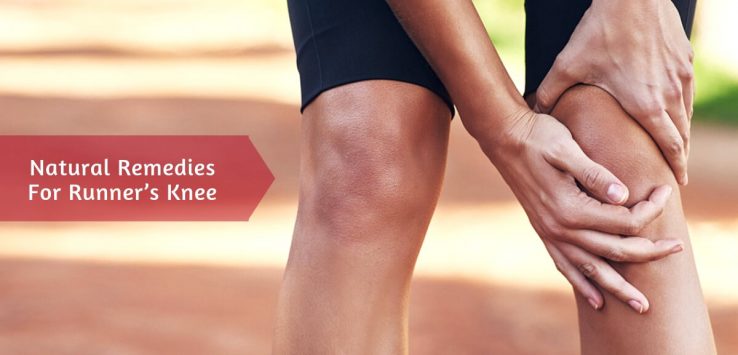Table of Content
Sitting in the long sit position with your knee straight, roll the foam roller from the back of the knee to the Achilles tendon. To facilitate the stretch, as you roll down the calf, slowly dorsiflex while keeping your knee straight. Lying in a long sit position, roll the foam roller from the glute along the entire length of the hamstring. To facilitate hamstring stretch, keeping your knee straight, abs tight, bring your butt to the ground and slowly flex forward while keeping your chest up. A lot of runners deal with runner’s knee — but that doesn’t mean you have to.
Repeat 10 times on the left leg, then switch to the right. Your heels should be around 6 inches in front of your hip bone, and your feet should be around shoulder-distance apart. Repeat 10 times, then switch legs, putting the right leg on the stair.
How to identify runner’s knee
The kneecap then rubs against the thighbone, causing knee pain and swelling that often worsens with activity. Nonsteroidal anti-inflammatory drugs are sometimes used to ease the pain in people with runner’s knee if the application of ice doesn’t suffice. But if you’re looking for a natural alternative, you could try having a little ginger or turmeric.

You don't have to run to develop this knee pain, and fortunately, it's most often treatable without surgery. Stretches – Stretch your quadriceps, calves, and hamstrings repeatedly before, during, and after exercise to keep the muscles and tendons limber. But you don’t have to be an athlete to deal with this common cause of chronic knee pain. Symptoms, which include mild pain in the front of the knee, increase when running, going up or down stairs, or sitting for long periods of time. They may also intensify during actions such as kneeling or squatting. Always let your body heal, before you go back to your sports activity.
Recovery time
As people age, the cartilage around the joints begins to wear down. As a result, joints can become stiff and painful, resulting in diminished mobility and a greater struggle to be active or perform routine tasks. You can also go the high-tech approach and immerse yourself in whole body cryotherapy, which will help eliminate swelling and inflammation, and also help with the pain.
The patellar tendon is what attaches your kneecap to your shinbone . When your hamstrings are tight, it pulls on the patellar tendon, which can cause pain in the front of your knee. There are tendons in the hamstrings and calf muscles that connect these muscles to the bone just behind the knee. So your back of knee pain could be caused by an injury or problem in these muscles or tendons. An additional sign of this problem might be chronically tight hamstrings or calf muscles that you constantly feel like you need to stretch or roll out . When you have knee pain starting with home treatments is the first step to recovery and getting back to all the activities you love.
Return to Training with Support
Sometimes home treatment just isn’t enough when you have runner’s knee. If your pain gets worse over time or goes away and comes back it’s time to talk to your doctor. But knowing when to use ice and when to use heat for pain relief can be confusing, especially if youre dealing with an ache or issue that youve never dealt with before.
Usually, pain in the knee wont be a sign of anything serious. However, it might require medical attention if the pain is very severe, doesnt get better, or is accompanied by other symptoms. Ibuprofen and NSAIDs can tamp down inflammation and help with pain, but they also wreak havoc on your gut.
Do You Have Pain Behind The Knee
The most common culprit of this uncomfortable rubbing is muscle weakness and tightness around the legs and core. Here, we outline where those issues occur, plus what you can do to treat runner’s knee. Do a five-minute warmup followed by stretching exercises before you run or perform any activity that stresses the knee. Your doctor can show you exercises to increase your knee’s flexibility and to prevent irritation.
The soft tissue that connects the hamstring muscle to the pelvis, shinbones and outer part of the knee is known as the hamstring tendon or tendons. If that tendon gets inflamed, torn, or is otherwise strained, a person might first notice pain in the back of the knee and, sometimes presenting in the thigh as well. Use crutches if theyve been given and avoid putting any pressure on your knee until your doctor says its okay. Wait at least two weeks or until your doctor gives you the go-ahead before you bathe, swim, or use a hot tub. Eat high-fiber foods such as fresh fruits and vegetables to ensure you have regular bowel movements.
See a doctor if your knee pain doesn’t go away after three weeks. A physical therapist can help you determine which exercises will be most effective for you based on your situation. They can help you find exercises to target and stretch specific areas. They’ll also be able to observe if you have a muscular imbalance that needs to be corrected. Lie on one side with your hips and knees bent and your feet stacked on top of one another.

If you feel no pain during folding and bending your legs during a jog or walk, then you are good to go. They can help to better position feet and manage body weight more effectively. To strengthen your muscles, there are many exercises available.


No comments:
Post a Comment